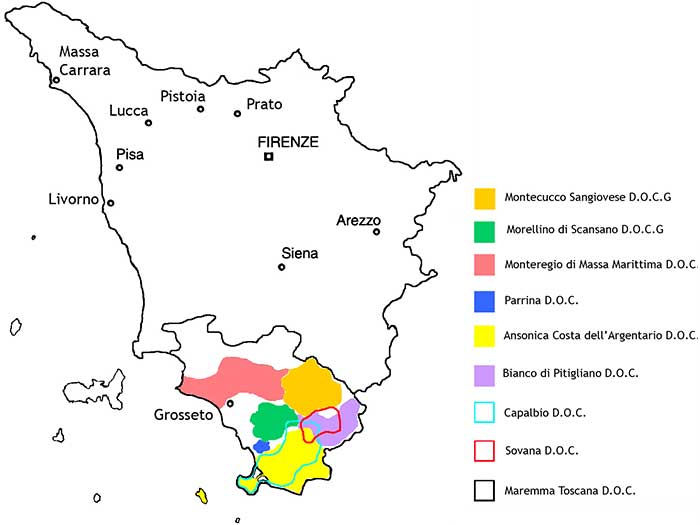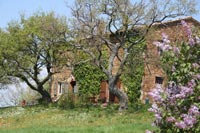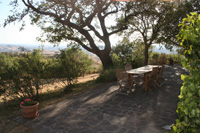|
Italy is one of the largest producers of wines. Its climate, soil and very old traditions make Italy a natural wine growing nation. The wines are as personal as a name, as different as the colors of the rainbow and as much a part of Italian life as almost 3,000 years of tradition can make them. The Etruscans of North-Central Italy, who created one of the peninsula's earliest civilizations, left evidence of how to make wine. The Greeks who soon after established themselves in the South gave Italy the name Enotria (the land of wine). Tuscany (Toscana) is known mainly for Chianti, while Tuscany's wine of greatest stature is Brunello di Montalcino. |
 |
Montecucco wine region
|
Montecucco D.O.C. |
||
|
The principal wine villages in the Maremma are Bolgheri, Castagneto Carducci, Scansano, Cinigiano and Suvereto. Grapes used in Maremma wines include Sangiovese, Cabernet Sauvignon, Merlot, Chardonnay, Vermentino, Cabernet Franc, Alicante and Aleatico.
|
|
Strada del Vino di Montecucco - Toscana |
||
| The Montecucco Wine Trail runs through a vast area situated on the slopes of Mount Amiata, which has its centre at Cinigiano, lying between the Maremma region and Amiata. The vineyards are situated on the southwest hillsides of the Amiata Mountain, directly opposite the Brunello slopes; the two enjoy the same microclimate. The seven Comuni which produce the Montecucco DOC wine are all to be found in the Province of Grosseto, in South Tuscany, and are, besides Cinigiano: Civitella Paganico, Campagnatico, Castel del Piano, Arcidosso, Seggiano and Roccalbegna. The Montecucco wine trail (La Strada del Vino Montecucco) consists of a main roadway with five turn-offs. It can also be found on the official site of Strada del Vino Montecucco - Montecucco Wine Trail. |
||
| Organic wines in southern Tuscany A high proportion of the top producers in Montecucco practise organic or biodynamic viticulture. More and more wineries believe in maintaining the delicate chain of a balanced biological ecosystem and use organic or sustainable approaches to winemaking. Proponents of organically grown wine believe that chemical farming destroys the uniqueness of the land, and the unique flavor that this 'terroir' imparts to the wine.
|
||
Wines in Southern Tuscany
|
||
 |
||
Map of wines in Maremma Toscana |
||
Member companies of the DOC Montecucco
|
||
 |
||
Old red wine bottles in Montalcino
|
||
Brunello di Montalcino |
||
Brunello di Montalcino
|
||
Montepulciano and San Biagio |
||
| Vino Nobile di Montepulciano |
||
Vino Nobile di Montepulciano
|
||
| The Chianti area |
||
Sunset in Chianti in the vineyards in Lornano, Chianti Classico area, Siena, Tuscany [2] |
||
| The Chianti area | ||
IGT wines | Super Tuscans | Sassicaia, Ornellaia |
||
Super Tuscans.
|
||
 |
||
La Rocca di Frassinello winery in Central Maremma is the result of a partnership between Paolo Panerai, |
||
|
||
|
||
Holiday homes in the Tuscan Maremma | Holiday home Podere Santa Pia
|
||||
 Banfi, Castello di Poggio alle Mura, view from Podere Santa Pia |
 Castello Colle Massari, view from Podere Santa Pia |
|||
Cantina Antinori. Architecture in Chianti Classico, San Casciano Val di Pesa
|
La cantina del Castello Colle Massari, Poggio del Sasso, Cinigiano
|
Una prospettiva dal basso dell'architettura di un edificio a scala a chiocciola ad Antinori nel Chianti Classico, Loc. Bargino, San Casciano in Val di Pesa
|
||
|
||||
 |
||||
Podere Santa Pia overlooking the Maremma hills |
||||







